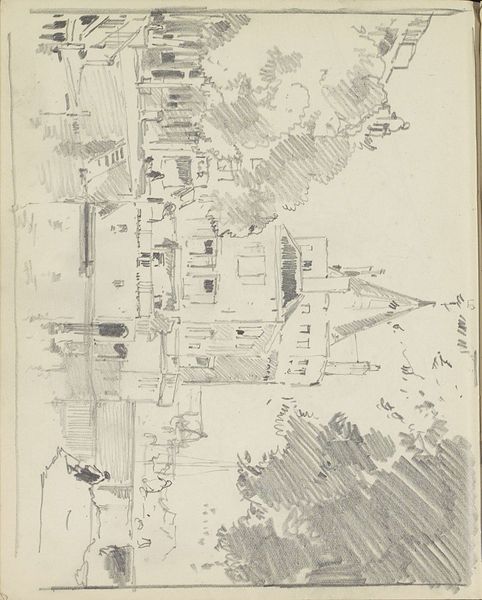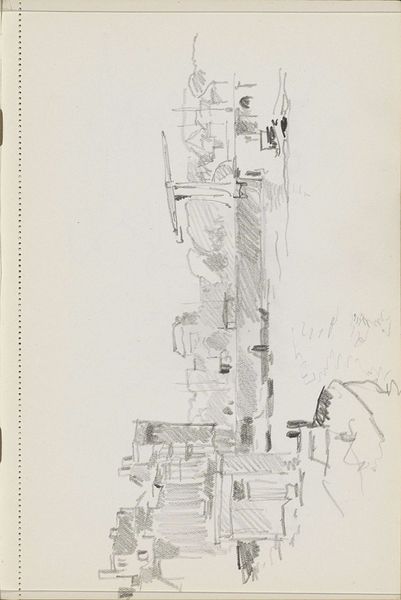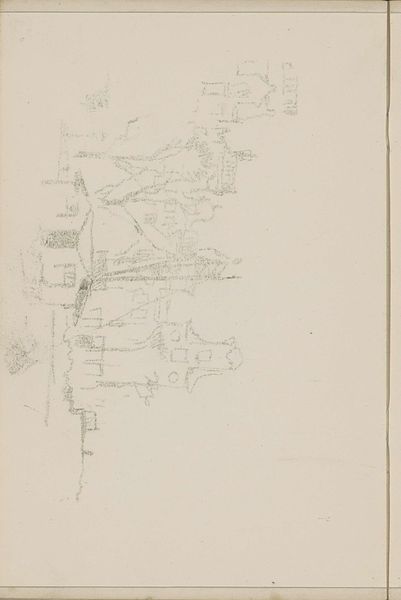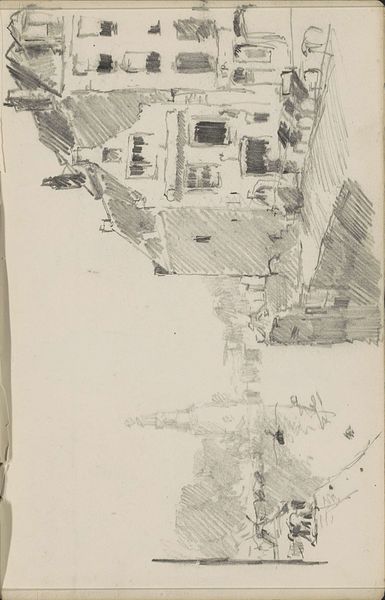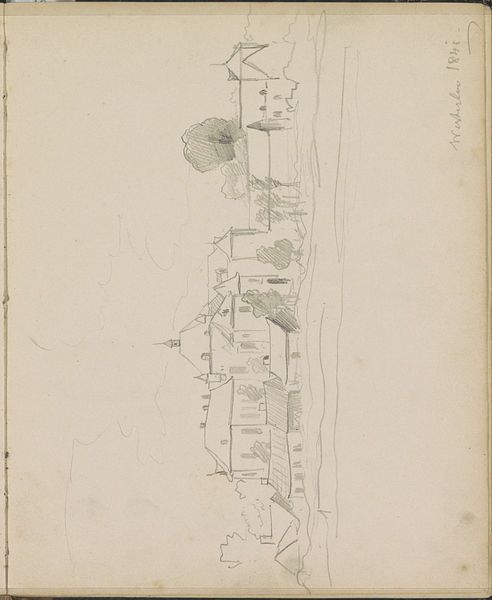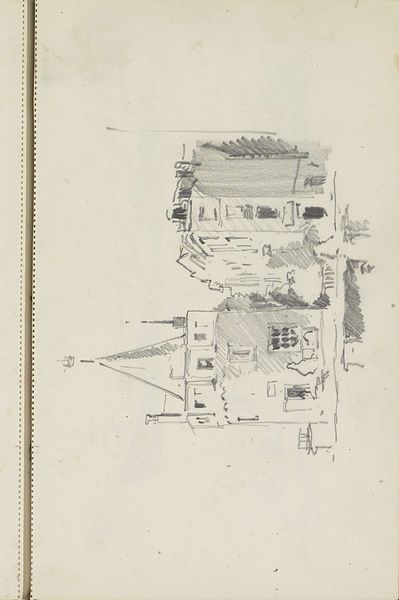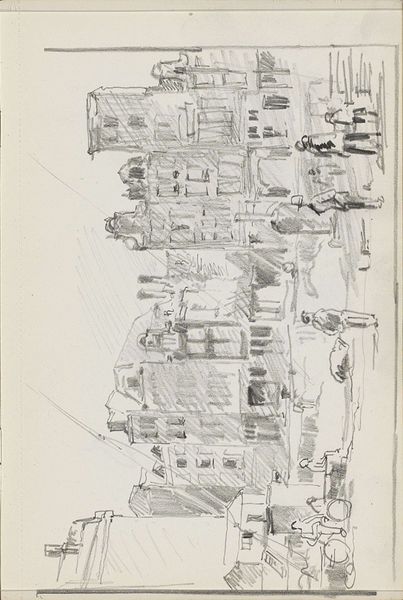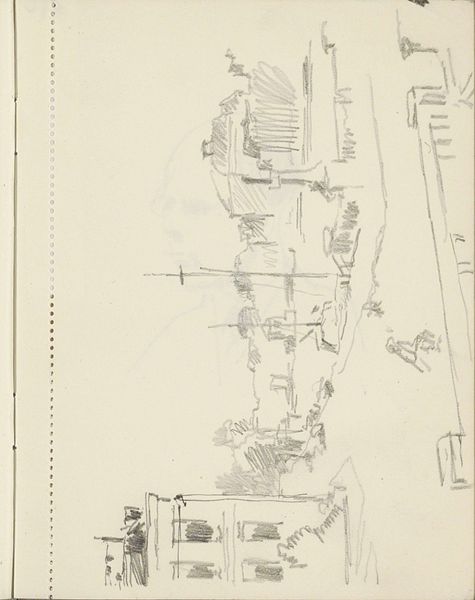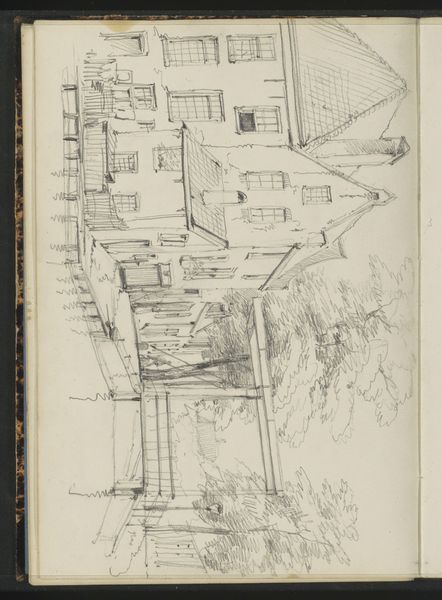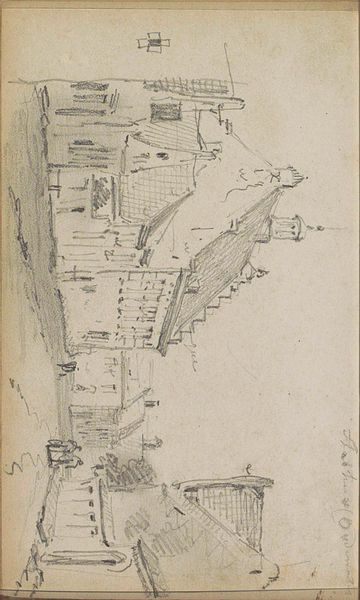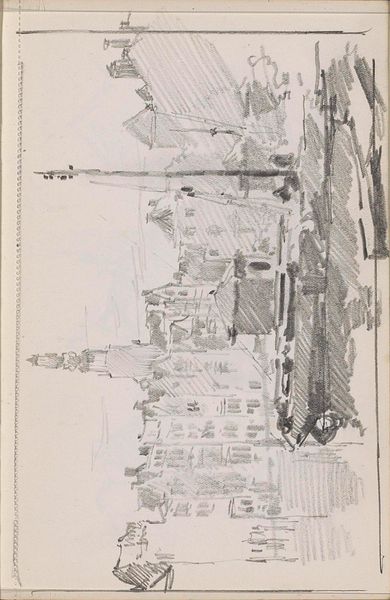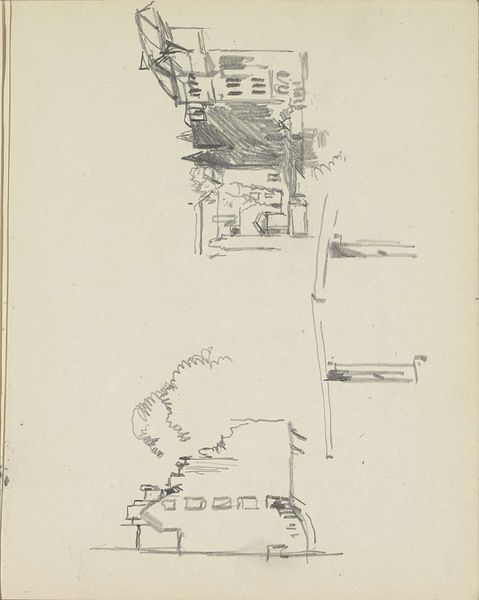
Copyright: Rijks Museum: Open Domain
Curator: Before us is Cornelis Vreedenburgh's pencil drawing, "Straathoek," dating from somewhere between 1890 and 1946. It's part of the Rijksmuseum collection. Editor: The initial feeling is one of fragmented urban space. The pencil lines are so light and tentative, almost ghostly. Curator: Indeed. Vreedenburgh situates us on a street corner, observing the urban environment with the casual yet attentive eye of a modern observer. We might explore how rapid urbanization shaped identity during this period. Did this work speak to feelings of alienation and anonymity? Editor: I am drawn to the repetition of rectangular shapes of the building's windows and the variation of line thickness which gives a sense of depth despite the flatness. Notice, how the artist emphasizes form and structure rather than precise representation. Curator: The visible presence of foliage intertwined with the buildings offers an interesting tension between nature and the man-made. This raises questions of access and urban development and speaks to who is and isn't allowed to be present within the urban sphere. Editor: There is also an interplay between order and chaos. The relatively ordered architecture juxtaposed against the more chaotic foliage emphasizes the fleeting, transient quality of urban life. Curator: Absolutely, the drawing invites consideration of societal shifts during that time. The use of negative space may imply not just absence, but the exclusion of certain demographics from participating in or being visible within the public landscape. Editor: I see it as less of a socio-political statement. I see the artist capturing the fleeting moments, exploring light and shadow on the facade, capturing the sensation of a place in time rather than the politics of space. Curator: It appears both these aspects intersect and overlap. Regardless, I believe Vreedenburgh’s urban landscape reflects a modern perception, prompting dialogue about the intersection of society and the human environment. Editor: The visual economy and formal exploration create something far more profound. The essence of the image lingers beyond what can be spoken.
Comments
No comments
Be the first to comment and join the conversation on the ultimate creative platform.

